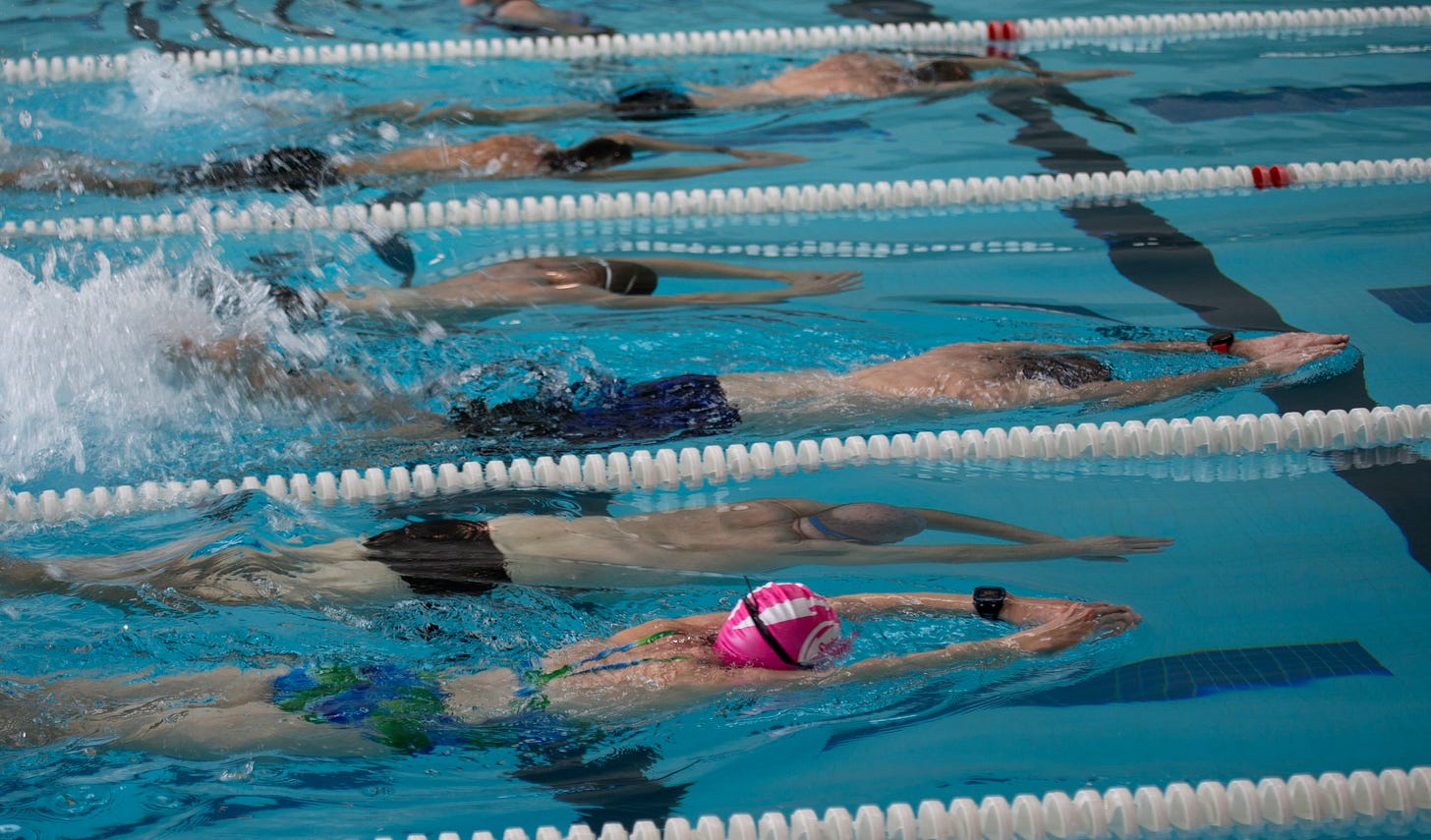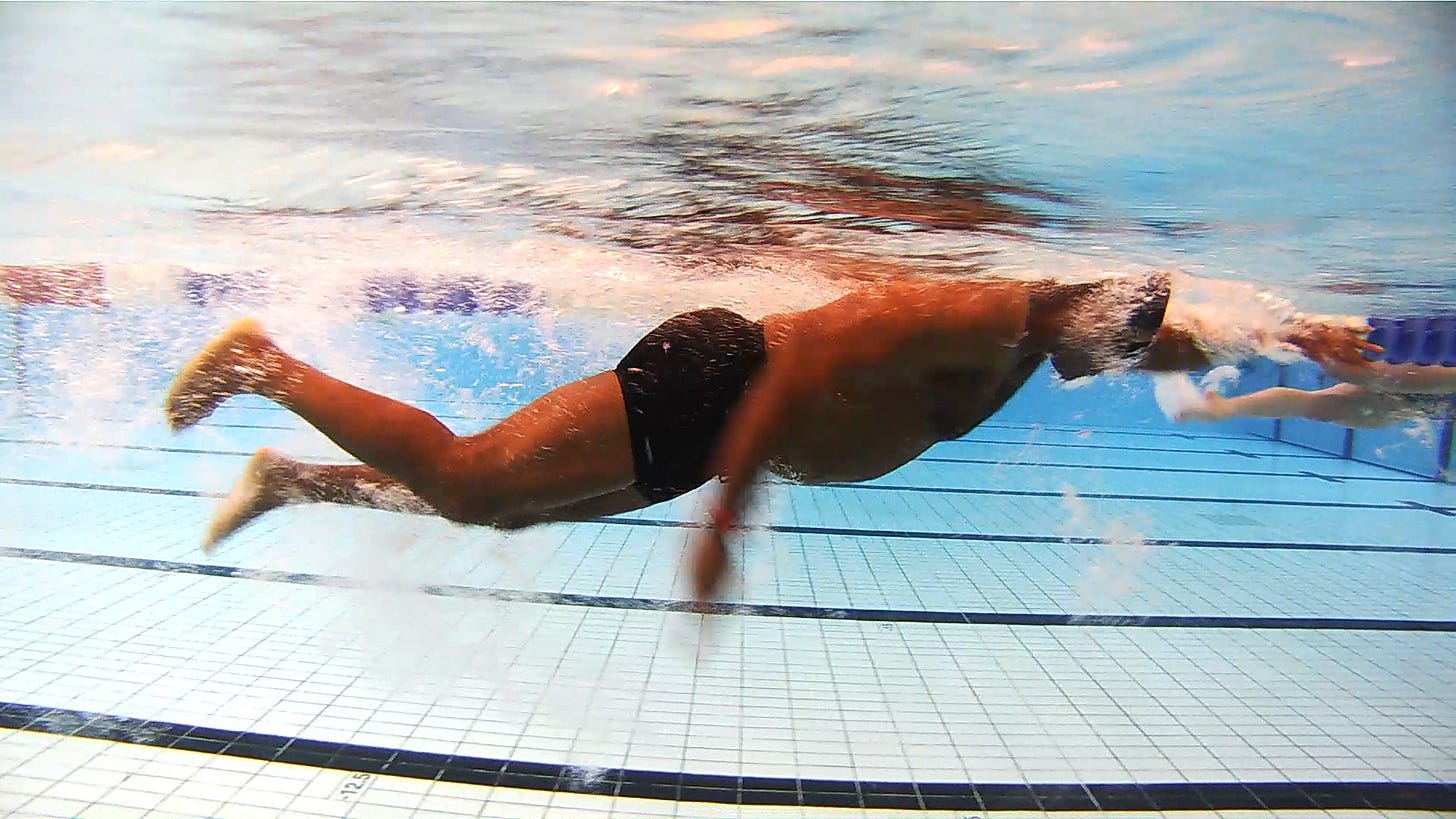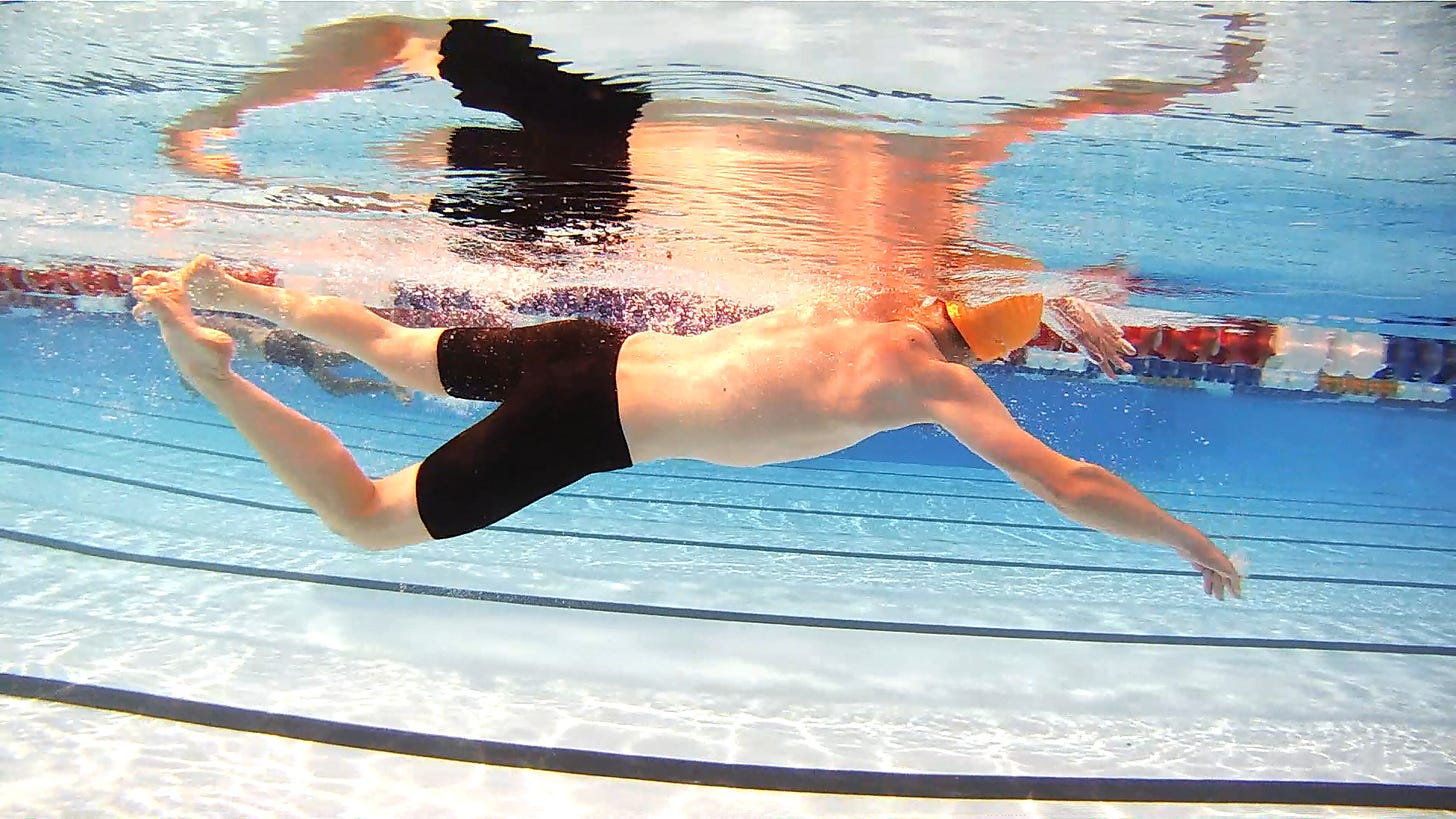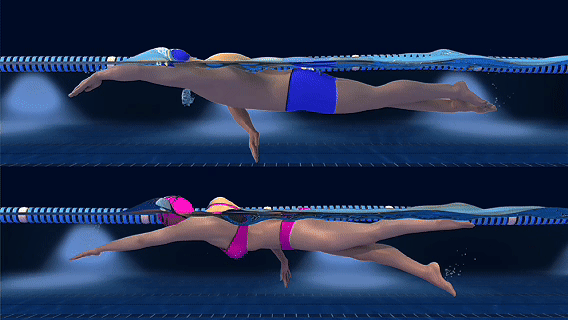🦵Kicking Technique: Is Your Kick Helping or Holding You Back?
4 Simple strategies that will make a big difference!
Hey Swimmers,
I vividly remember reading a triathlon article back in the early ’90s advising swimmers to “not waste energy kicking.” The logic? Your kick only contributes about 11% of total propulsion in freestyle, and triathletes need to save their legs for the bike and run.
While there’s some truth to that, for endurance athletes especially, it’s a message that’s lingered far too long in swim coaching folklore. The result? Many adult swimmers either ignore their kick entirely or use it inefficiently, costing themselves both energy and speed.
Let’s be clear: kicking isn’t just about propulsion. For most swimmers, especially in open water, it’s more important to reduce drag and maintain streamline than it is to power yourself forward with the legs.
Here’s what you should be focusing on instead.
1. Eliminate the Lateral Scissor Kick
This is one of the most common flaws we see in freestyle. From above, the legs open wider than the hips, like a parachute behind you.
Why it happens:
Often during the breathing phase, especially when the lead arm crosses the centreline, unbalancing the body.
How to fix it:
Correct the crossover (see our in-depth video below) by pointing your middle finger straight ahead, aligned with your shoulder.
Engage the feet: Turn your big toes inwards slightly and gently brush them past each other to stay streamlined.
2. Fix Your “Sea Anchor” Feet
Stiff ankles—common in runners and cyclists—create significant drag when toes point downward (dorsiflexed), acting like sea anchors.
Test it yourself:
Swim one length with pointed toes, then one with flexed ankles. The difference is huge.
What to do:
Improve ankle flexibility with regular stretching.
Use fins during drill sets to increase ankle range and reinforce good habits (see both videos below - 1) fins and kicking drills; 2) how to reduce drag).
3. Reduce Excessive Knee Bend
Excessive knee flexion often compensates for poor body position. You may think your heels are high, but it's your knees doing all the work—and that’s costing you oxygen and rhythm.
Why it’s inefficient:
It lifts the feet, yes, but with a high aerobic cost and poor return.
Better approach:
Fix your body position with better exhalation, head alignment, and core stability.
Squeeze the glutes lightly to initiate the kick from the hips, not the knees.
Think “longer, straighter legs” with each beat.
4. Two-Beat vs Six-Beat Kick: Which Should You Use?
This is a common question with no single answer. Here’s a breakdown:
Six-Beat Kick (default for most swimmers)
3 kicks per leg per stroke cycle
Offers rhythm and balance
Good for tempo control and short-course pool racing
Two-Beat Kick (favoured by distance swimmers)
1 kick per leg per stroke cycle
Opposite arm/leg action (e.g. left hand enters as right leg kicks down)
Requires excellent timing, catch mechanics, and high stroke rate
Shelley Taylor-Smith—seven-time world marathon champion—used a two-beat kick with a stroke rate of 85–90spm for long events. Inspired by her, I switched from a six-beat kick to a two-beat rhythm when I transitioned from triathlon to marathon swimming. Watch my analysis of Shelley’s kick below:
Was it easy? Not at all. It took 40 sessions before I saw gains. But it paid off long-term.
That said, it won’t suit every swimmer—and it’s best approached with patience and guidance. Watch our exclusive guide on how to do this below:
Final Word: Don’t Kick Harder—Kick Smarter
If you’re training for long-distance or open water events, your kick should be about control, rhythm, and reducing drag. That’s the real key to efficiency.
Next week, we’ll dive into training zones—how to use them properly, what they mean in swim training, and how they can transform your pacing and progression.
Thanks for listening or reading,
Your Coach,
Paul
Keep reading with a 7-day free trial
Subscribe to Weekly Blog by Swim Smooth to keep reading this post and get 7 days of free access to the full post archives.




